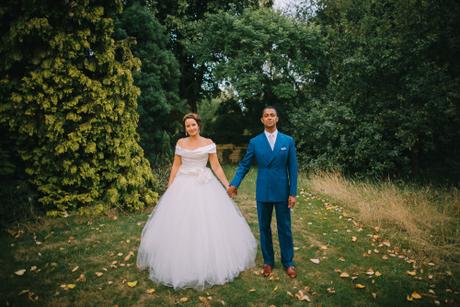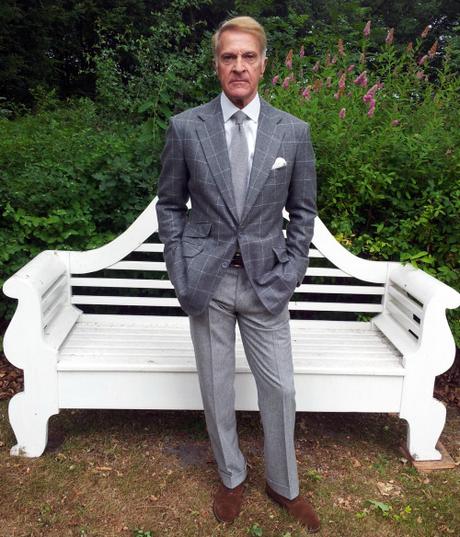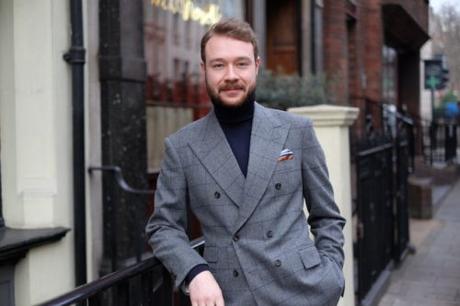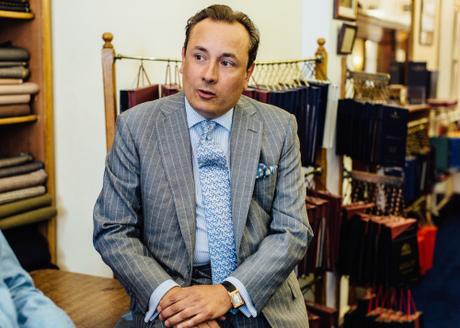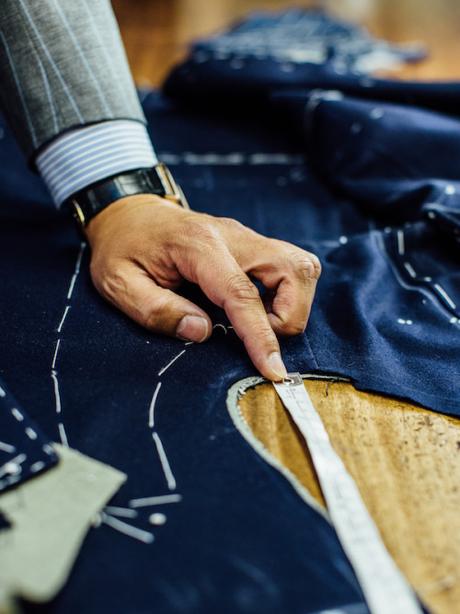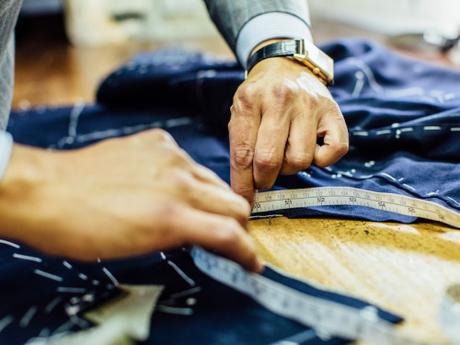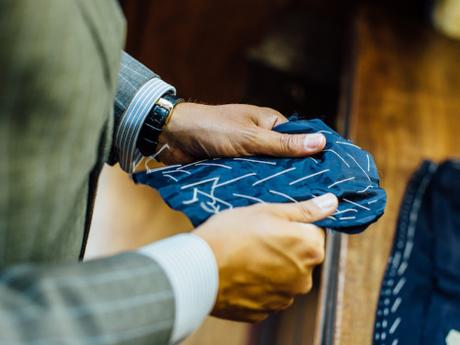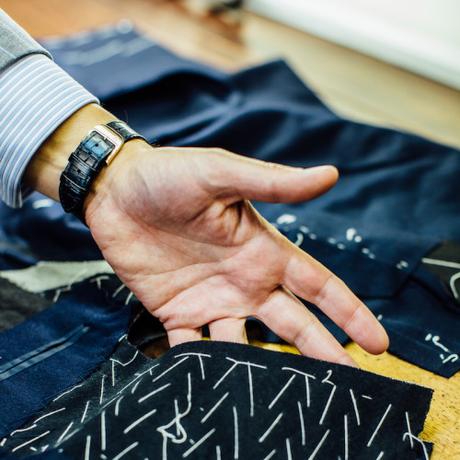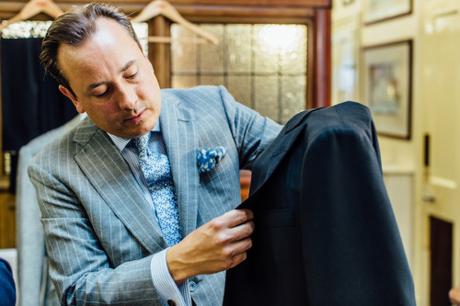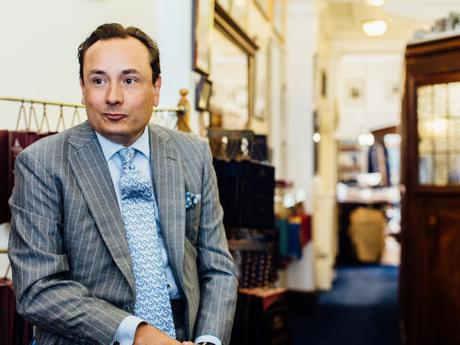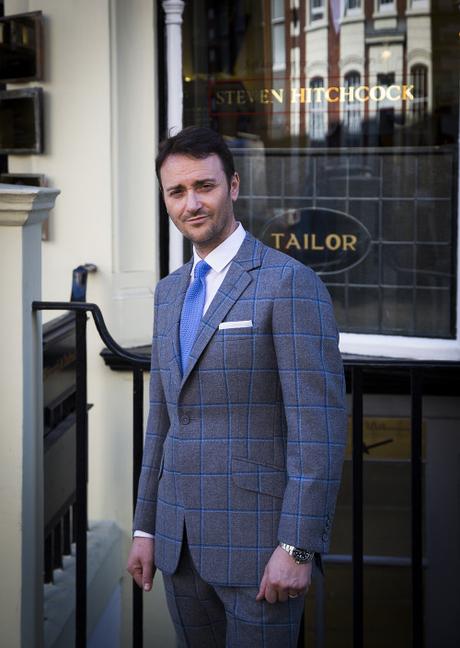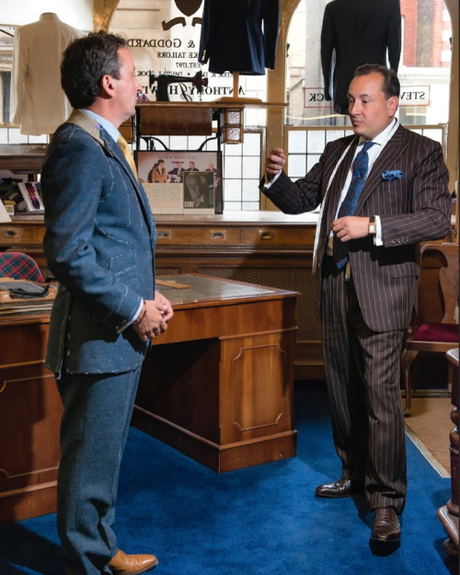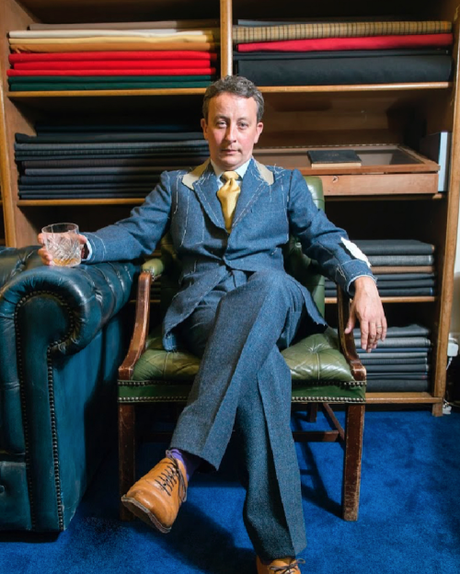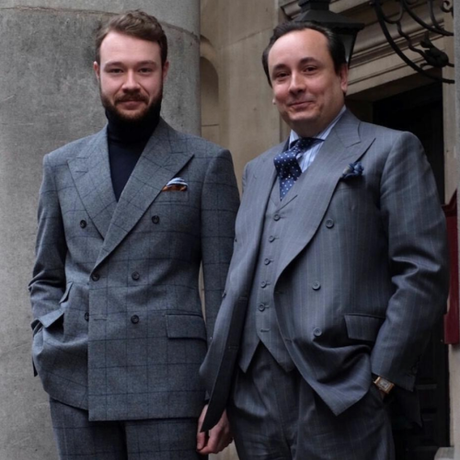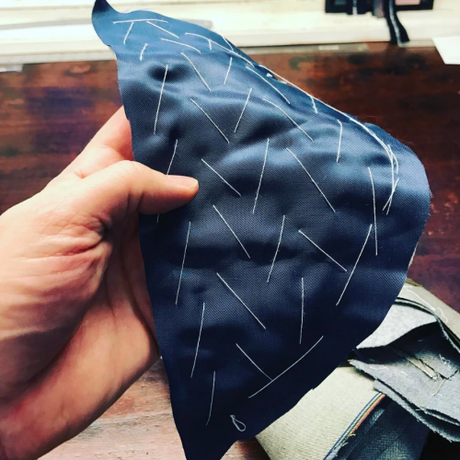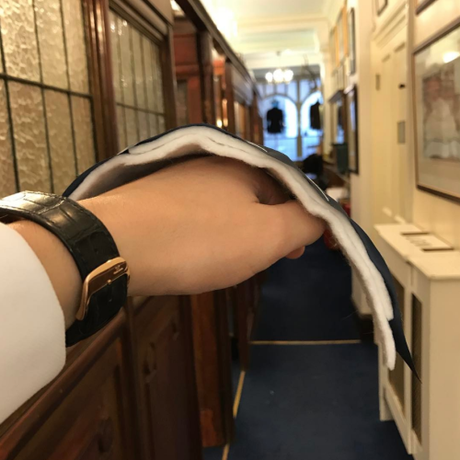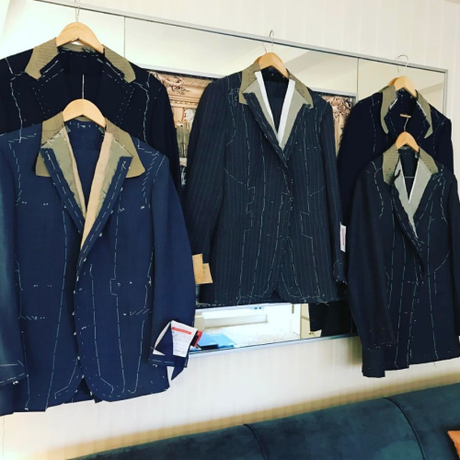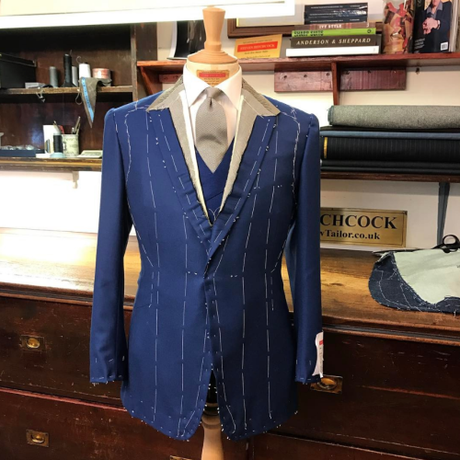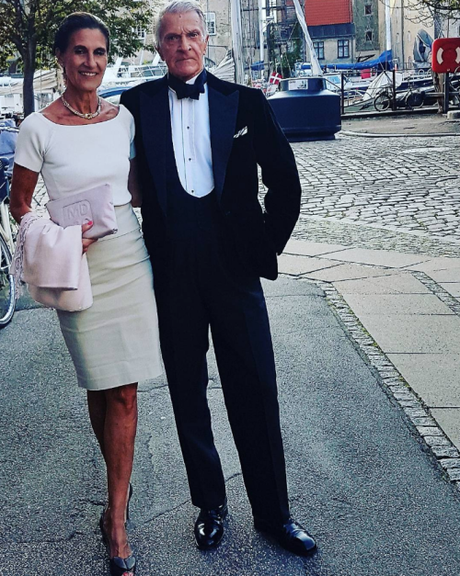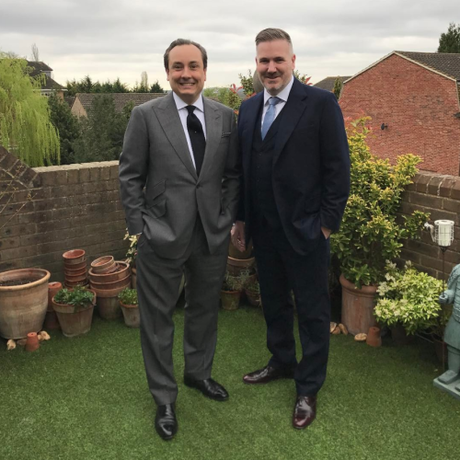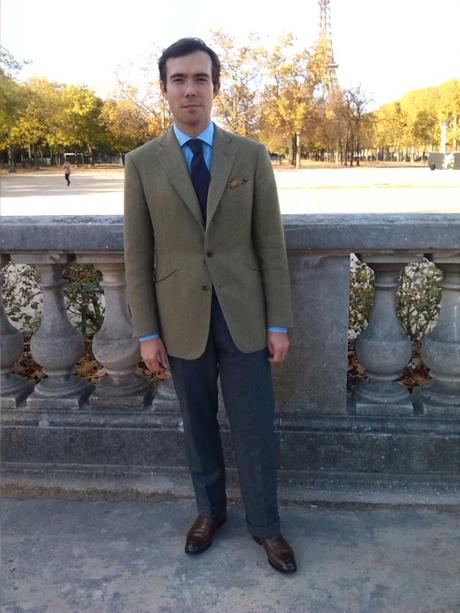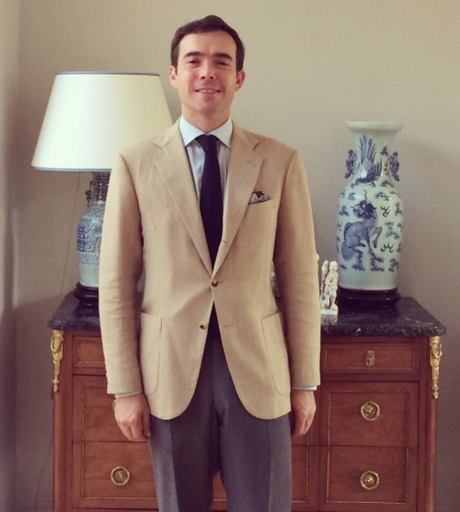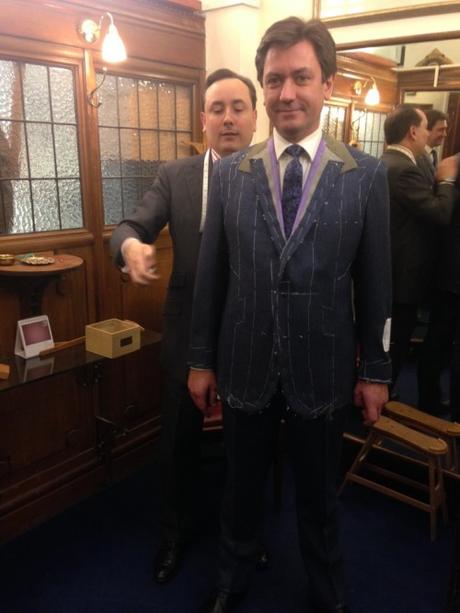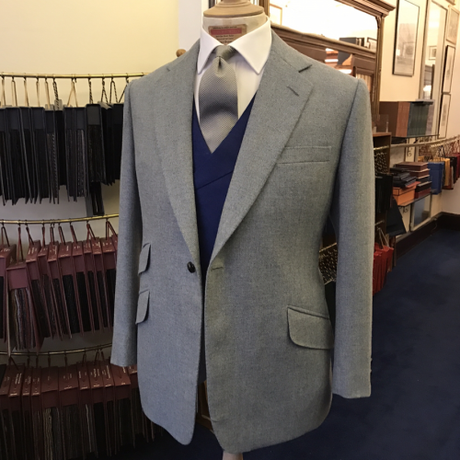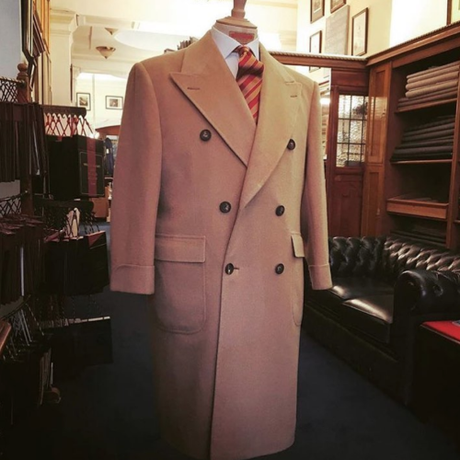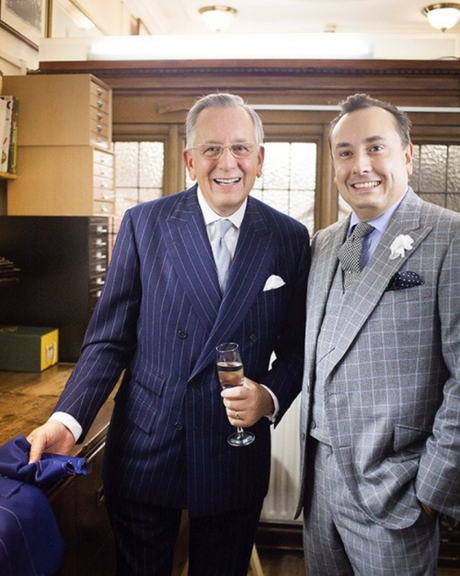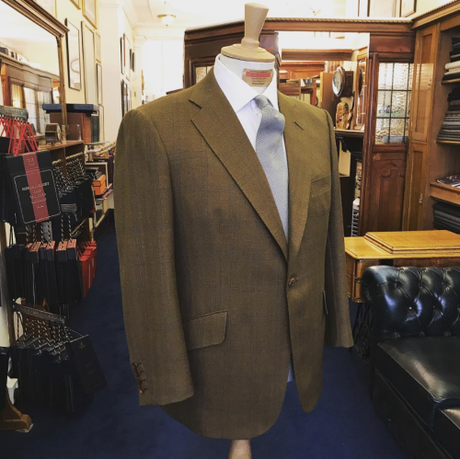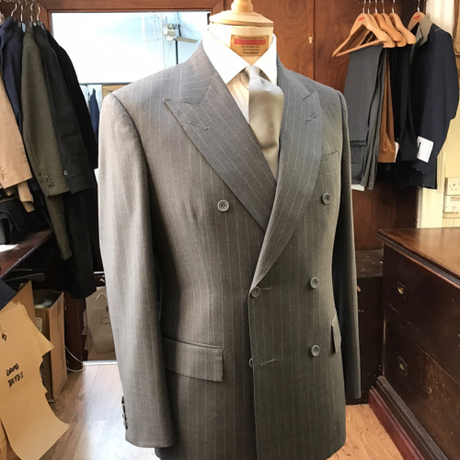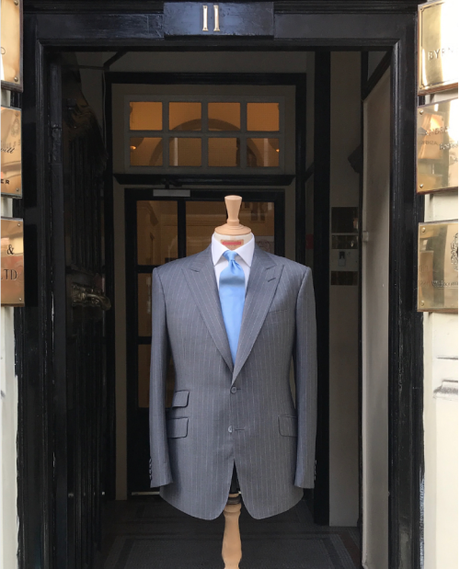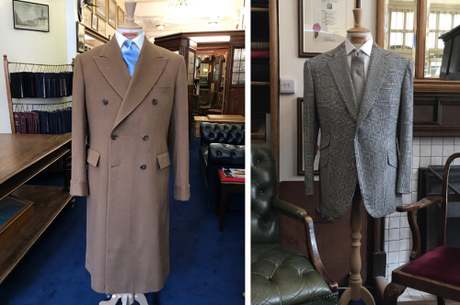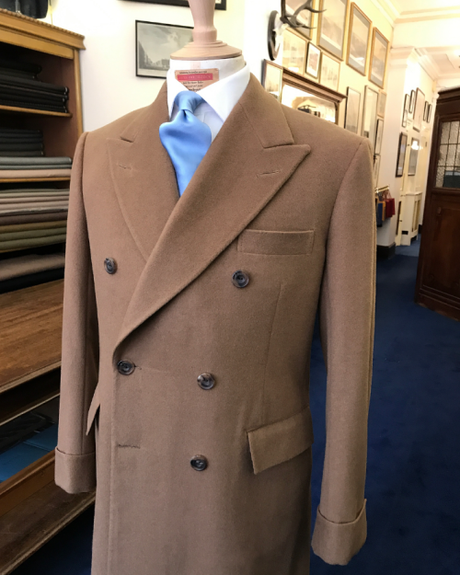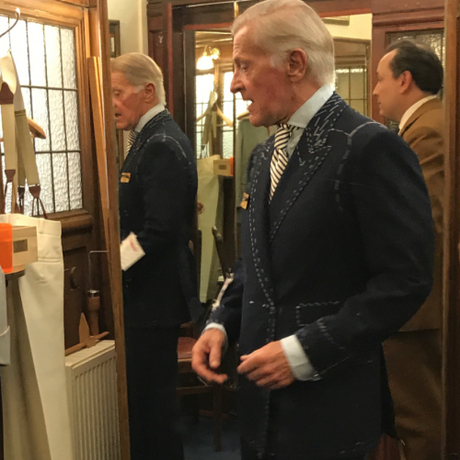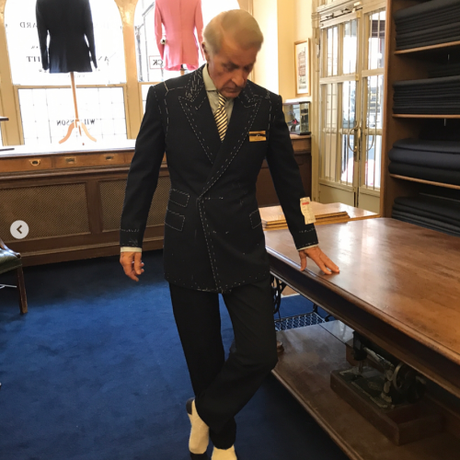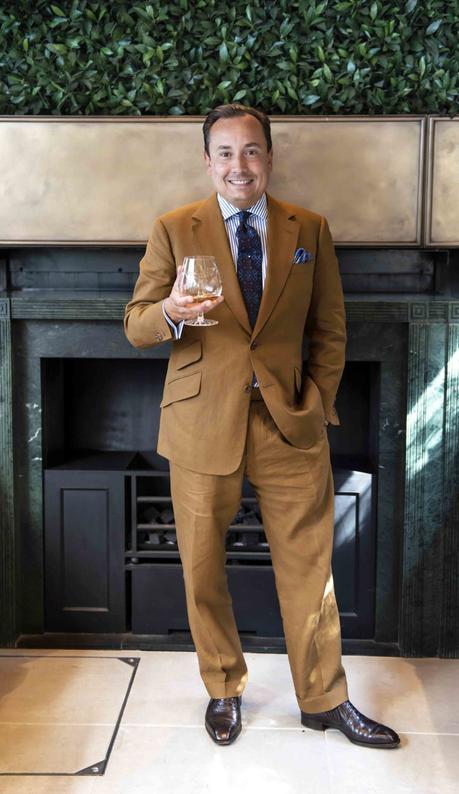
Tailoring is often described in regional or house terms. Anderson & Sheppard’s iconic drape cut is soft shouldered and full throughout the chest, making even the most frail and pudgy look athletic. Conversely, Huntsman’s imposing shoulder line and flared skirt, which kicks out from the hips, accentuates their X-shaped silhouettes. Huntsman’s cut is derived from their heritage, obvious from the company’s name, back when the firm used to tailor for Europe’s hunting and riding aristocracy.
Over the years, I’ve realized these generalizations only take you so far. In reality, there’s no such thing as an Anderson & Sheppard cut – only a specific cutter’s interpretation of a house style. The word cutter is a tailoring term for a person who drafts a pattern and cuts the cloth, sort of like the architect behind a building. Large tailoring houses can have two or three cutters, maybe more if you count the people making trousers, which means the same number of people can walk into a shop and come out with surprisingly different garments. If you like a bespoke suit or sport coat, it’s just as important to ask who was the cutter as it is to ask about the tailoring house.
Which is why I like working with small tailoring shops, where the cutter’s name is on the door. You have a better chance of knowing who cut each of the garments that carries the shop’s label. One such cutter-run firm is Steven Hitchcock’s, who’s been in the tailoring business for over twenty-seven years. He left school at age sixteen to find a trade, first puttering around with the idea of becoming a mechanic (he even took some classes for it). “At some point, my grandfather suggested I spend a day with my dad, John Hitchcock, who at the time was a trouser cutter at Anderson & Sheppard,” says Steven. “It ended up being fantastic. I thoroughly enjoyed seeing a pair of trousers get cut and made, as well as celebrities such as Liam Neeson walk through those doors.”
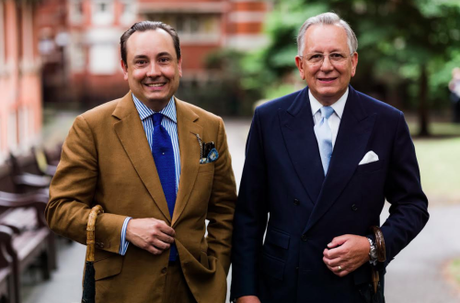
Steven entered the trade as an apprentice coatmaker at Anderson & Sheppard in 1990, where he was taught how to sew the various parts of a coat together. A few years later, management asked him to be an apprentice cutter, what’s known in the trade as a striker, after which he graduated and became one of the tailoring firm’s cutters. He worked at Anderson & Sheppard for many years throughout this time before deciding to venture out on his own. When he left A&S at age twenty-six, ten years after he took his apprenticeship, Steven was the youngest tailor on Savile Row to have his own shop.
It’s unusual in England for a tailor to be trained as both a cutter and maker. Most people come into the trade as one or the other, and then stay on their career path. This is dramatically different in Italy, where men will enter the tailoring world at a very young age – a generation ago, even when they were just boys – and slowly pick up different aspects of the craft throughout their lifetime. And while most still end up specializing in one facet of the production process, it’s not unusual to find an Italian tailor who can make an entire coat from start to finish if he had to.
Steven feels this gives him an advantage, especially as a traveling tailor, where he works as the salesperson, fitter, and cutter, but also has been trained in the different aspects of making a garment. “If you’re a cutter who can’t make, how do you explain to others what’s gone wrong with the coat?,” he asks.
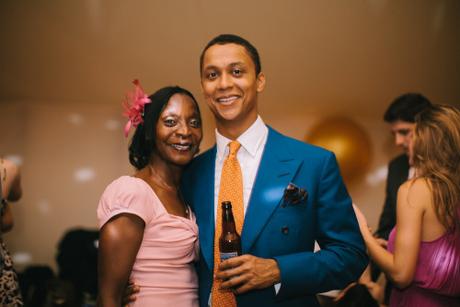
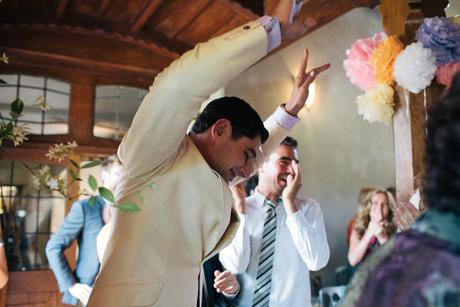
One of the notable things about Steven’s work is the clean precision. Being an Anderson & Sheppard expat, he clearly falls into the soft English style, drape cut tradition, but the center of gravity is different. His coats are a little tidier and neater, maybe even a bit more contemporary in style. “It’s still a drape cut because I cut a very straight coat,” says Steven. “That means the neck point has been brought forward about a half-an-inch, which throws the cloth back. However, I clear away some of the volume from the sides.”
You can see this in some of the photos above – the shoulder line is still soft and sloping, the waist nipped, and the armholes clearly high. And while there’s a bit of volume in the chest, it doesn’t “drape” around the armholes as much as, say, Edwin DeBoise’s creations at Steed. “I can still make a traditional drape cut for customers who ask for it,” says Steven. “But most customers today want something more controlled.” I think of Steven’s suits as a modernized drape cut, rather than the old-school, drape suits Men’s Club used to feature in their magazines during the 1980s and ‘90s.
For larger customers, Steven also cuts his jackets with a wedge running through the pocket, which helps hold the coat a bit closer to the body. “I want a clean, straight line, not a wavy line, down the waist. It’s what Frederick Scholte used to achieve a hundred years ago with an iron, but today we have to do with shears. Cloth is just much lighter in weight today, so you need that shape to hold.”

As for how he feels about the future of the trade, Steven is optimistic. While larger tailoring houses are shifting to ready-to-wear in order to pay for their exorbitant Savile Row rents, Steven manages to focus on bespoke by keeping his costs low. He shares his space with other tailors on 11 St. George Street – a small building lovingly known as “the tailors’ den,” as it houses Denman & Goddard, Whitcomb & Shaftesbury, L.G. Wilkinson, and others. Steven does all his work here in-house, on the bottom floor, where he’s hired his own makers.
“We only make a hundred and fifty suits a year,” he says. “It’s much more manageable as a small shop as you’re focused on making four to five suits per week, rather than the twenty you see at larger houses. It’s not hard to find customers; we struggle to find the best craftsmen, as we aim to make the best soft coat possible.”
Readers interested in Steven’s work can visit him in London. He also travels to the United States several times a year, where he sees clients in New York, Washington, and Philadelphia, San Francisco, and Los Angeles (the California cities are recent additions). Steven will actually be on the West Coast next week fitting customers. You can make appointments by contacting him through his website.
(photos via The Rake and Steven Hitchcock’s Instagram)


